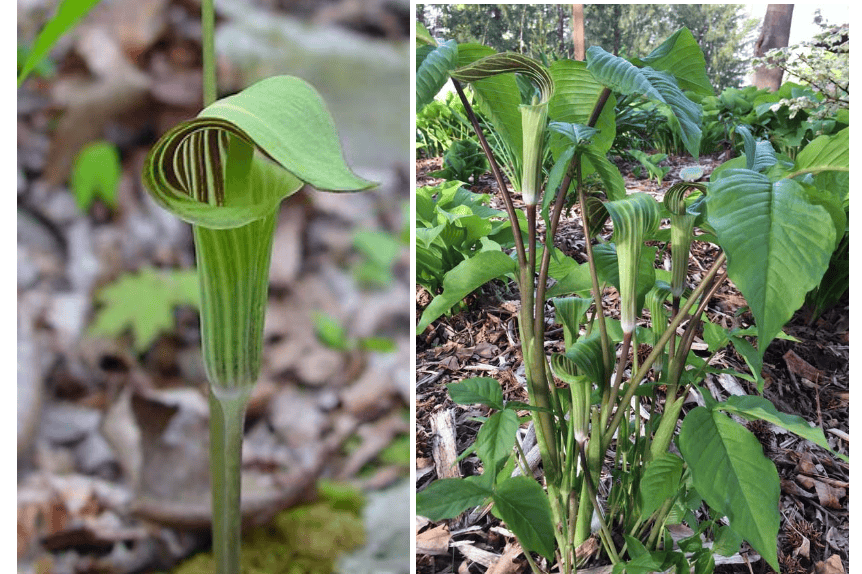
Monocots Araceae Arisaema triphyllum
Monocots Araceae Arisaema triphyllum
list 5
- “Jack in the pulpit”
- Has a very obvious spathe and compound leaves with 3 leaflets
- The spathe arches over the spadix
- The spandex has a rounded end
- Very common to typical woodlands
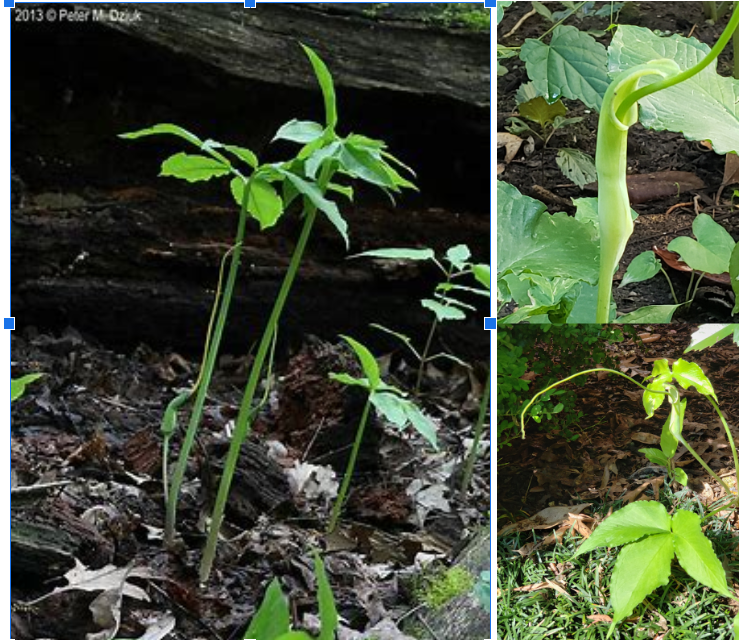
Monocots Araceae Arisaema dracontium
Monocots Araceae Arisaema dracontium
list 5
- “Green dragon”
- Has obvious spathe and compound leaves with 7-13 leaflets
- Locally abundant distribution (locally meaning patchy abundance but where it is found it is abundant)
- Spadix sticks out longitudinally distally from spathe and the spadix is pointed at the end
- Common to muddy soil in woodlands

Monocots Araceae Orontium aquaticum
Monocots Araceae Orontium aquaticum
list 7
- “Golden club”
- Is very rare and is of conservation concern
- Historically is found in westmoreland county, now just a single population in fayette
- Flowers april-june
- A monotypic genus (only one species in the genus)
- Found in swamps and shallow waters
- Simple leaves, spadix sticks out a long way away from the spathe, most of the spadix is exposed
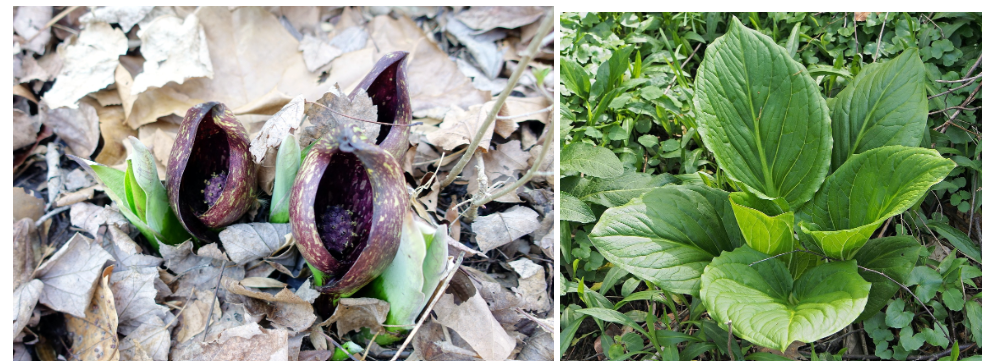
Monocots Araceae Symplocarpus foetidus
Monocots Araceae Symplocarpus foetidus
list 10
- “Skunk cabbage”
- Foetidus means bad smelling
- Common through the north east
- Another primitive member, has simple leaves
- Blooms as early as feb/march as its spadix can generate heat and melt through snow
- Pollinated by carrion flies so the plant produces heat, smells like rotting flesh, and its flowers are flesh colored
- The flowers are produced before the leaves unfurl, once the flowers die the large leaves unfurl and look like giant cabbage
- When crushed the leaves give off a pungent smell
- Contractile roots go deep into the ground ~2ft
- Native americans would dry the leaves and use it as a seasoning (like the rest of the family it is poisonous raw)
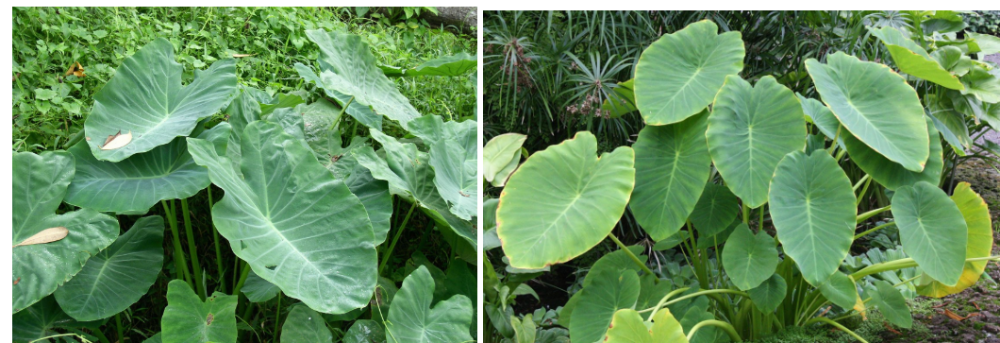
Monocots Araceae Colocasia esculenta
Monocots Araceae Colocasia esculenta
list 5
- “Taro”
- Native to malaysia/polynesia but was transported to hawaii where it became a very culturally and economically important plant
- All parts are edible when cooked
- Poi- a gross grey looking muck food that is created from the taro plant
- The first russian cosmonauts took meals of this plant into space as it is very nutritionally rich
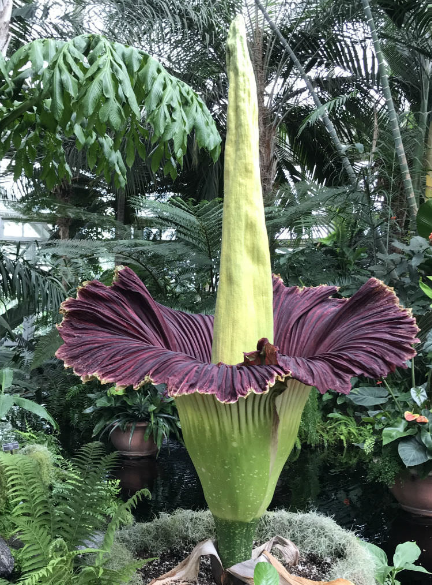
Monocots Araceae Amorphophallus titanum
Monocots Araceae Amorphophallus titanum
list 3
- The largest inflourescence, has huge spandex which funnels a rotten flesh smell up into the rainforest to attract bees
- Flowers once every 7-8 years
- In the wild it is only found on one island in indonesia
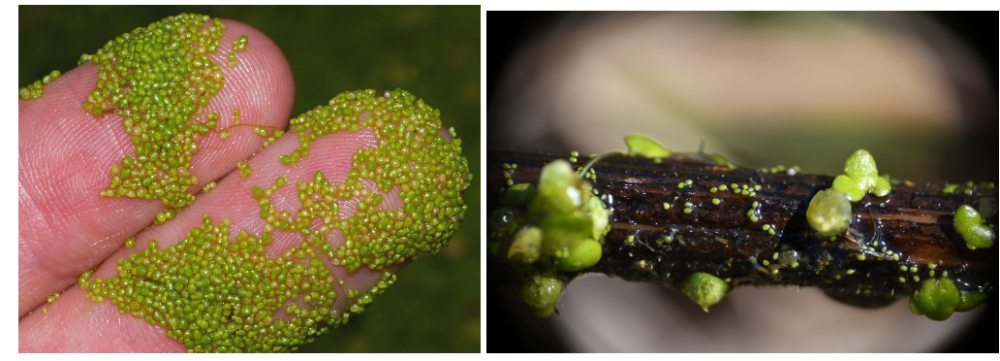
Monocots Araceae wolffia globosa
Monocots Araceae wolffia globosa
list 3
- The smallest plant
- Individuals are either male or female
- When male the flowers are reduced to a single anther, when female they are reduced to a single pistil
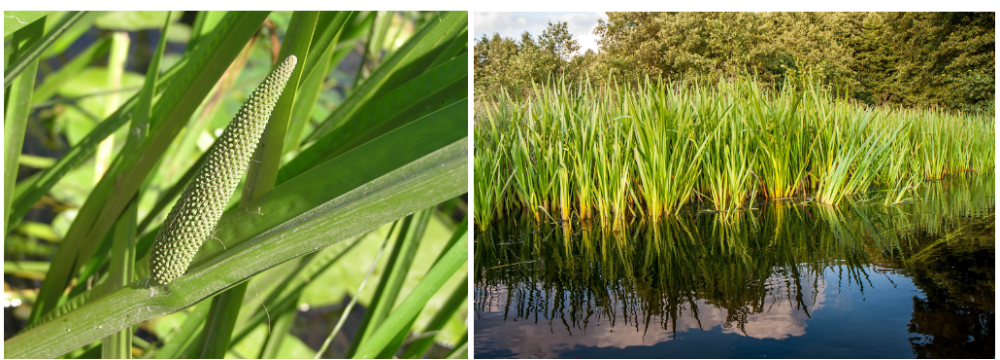
Monocots Acoraceae Acorus calamus
Monocots Acoraceae Acorus calamus
list 4
- “European sweet flag”
- Introduced from europe to PA
- Has a prominent midrib vein
- Once thought it had a spandex but later learned that this is a product of convergent evolution ( a superficial resemblance)
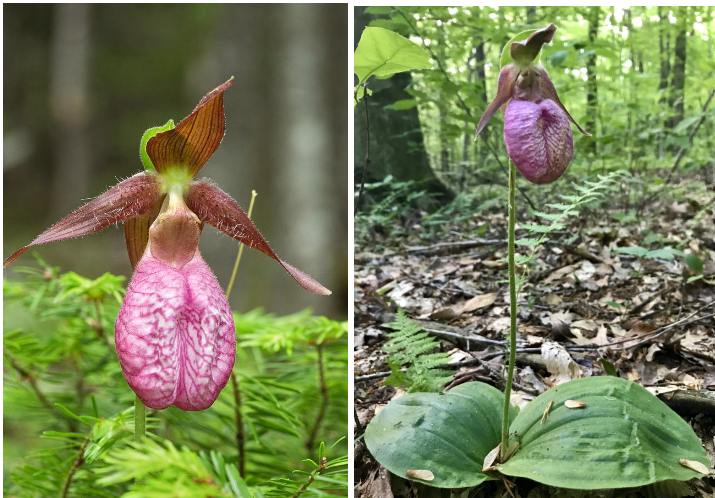
Monocots Orchidaceae Cypripedium acuale
Monocots Orchidaceae Cypripedium acuale
list 4
- “Pink moccasin (slipper) flower”
- Has a pink labellum while the rest of the petals are a chocolate brown
- They are acaulescent
- And typically found in acidic dry woodlands
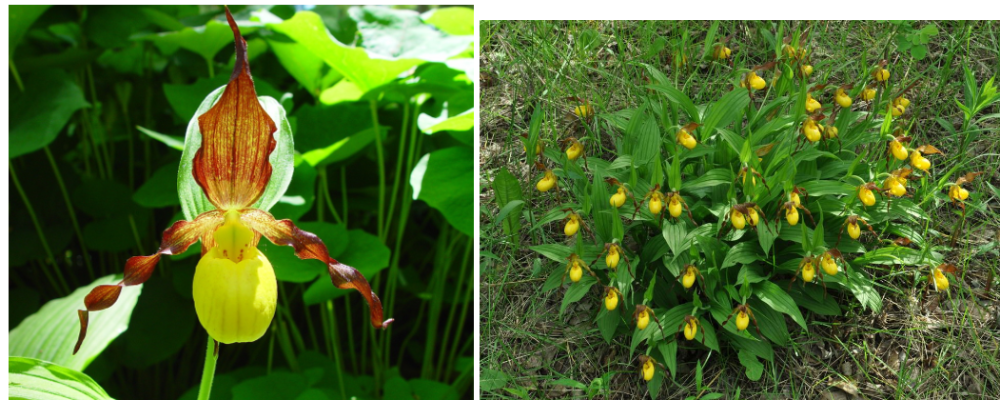
Monocots Orchidaceae Cypripedium parviflorum
Monocots Orchidaceae Cypripedium parviflorum
list 4
- “Yellow lady’s slipper”
- Yellow labellum while the rest of the petals are a reddish brown
- Caulescent
- Found in rich/diverse moist limestone woods
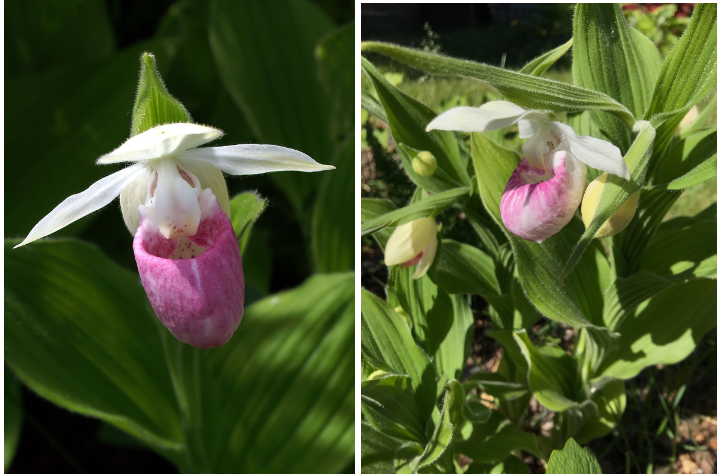
Monocots Orchidaceae Cypripedium reginae
Monocots Orchidaceae Cypripedium reginae
list 5
- “Showy lady’s slipper”
- Pink labellum while the rest of the petals are white
- Caulescent
- Found in glaciated parts of PA in high alkali boggs
- Not a very common species and is of conservation concern
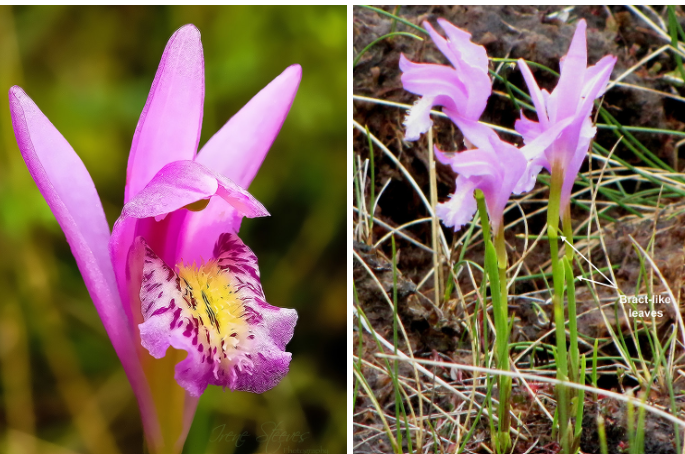
Monocots Orchidaceae Arethusa bulbosa
Monocots Orchidaceae Arethusa bulbosa
list 6
- “swamp-pink”
- A monotypic genus (the only one in its genus)
- Has a single 1 inch flower which is a bubblegum purple/pink
- Labellum is wavy almon its margin
- Found in sphagnum acidic bogs
- The closest relatives to this flower are all in japan
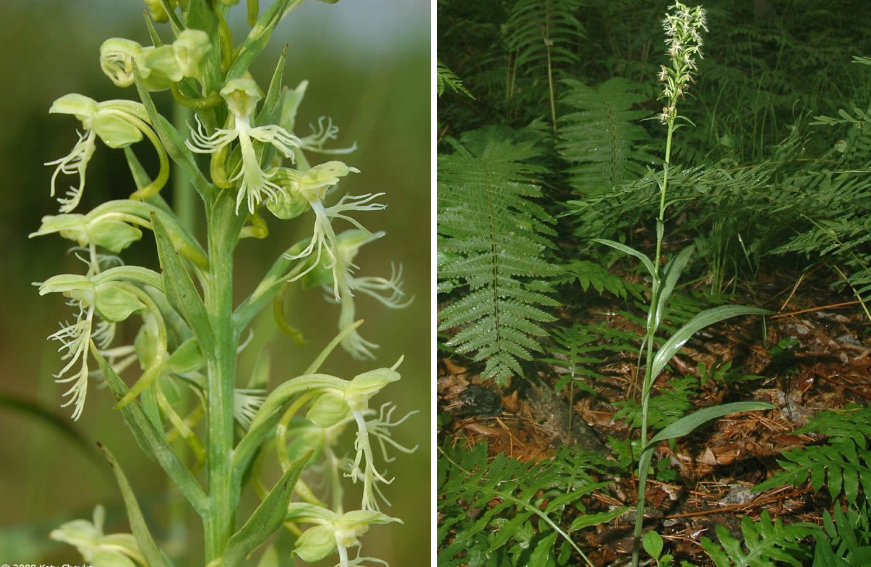
Monocots Orchidaceae Plantanthera lancera
Monocots Orchidaceae Plantanthera lancera
list 6
- “Ragged fringed orchid” and “pale green orchid”
- Largest genus in PA (15 genuses)
- Long stems that bear leaves along the length of the stem
- Flowers with really long spurs
- Found in soggy soils
- Bloom in midsummer
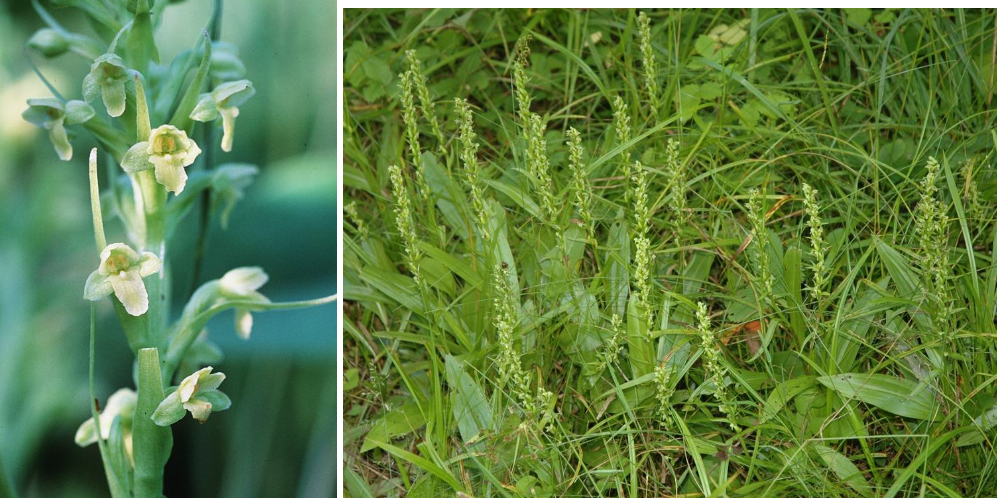
Monocots Orchidaceae Plantanthera flava
Monocots Orchidaceae Plantanthera flava
list 6
- “Ragged fringed orchid” and “pale green orchid”
- Largest genus in PA (15 genuses)
- Long stems that bear leaves along the length of the stem
- Flowers with really long spurs
- Found in soggy soils
- Bloom in midsummer
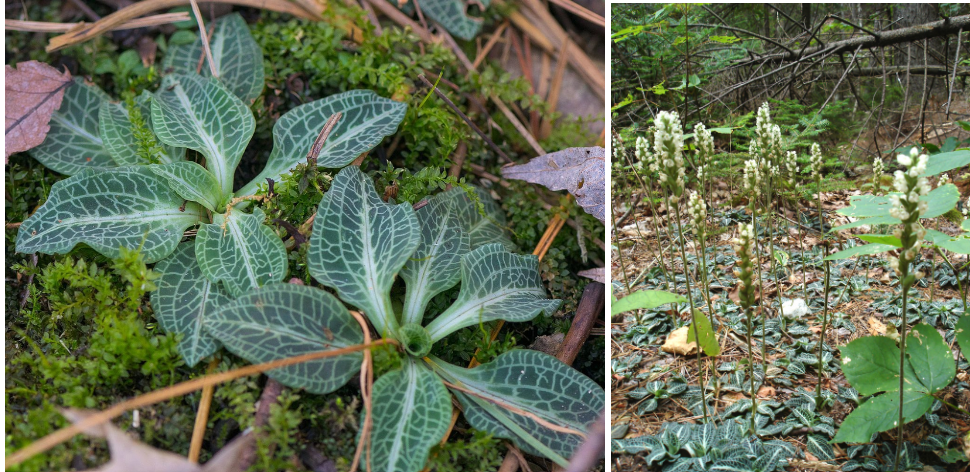
Monocots Orchidaceae Goodyera pubescens
Monocots Orchidaceae Goodyera pubescens
list 6
- “Downy rattlesnake plantain”
- 3 species of this in PA
- A very distinct venation pattern
- Purple brown leaves with silvery white veins
- Found in woodlands
- Flowers midsummer
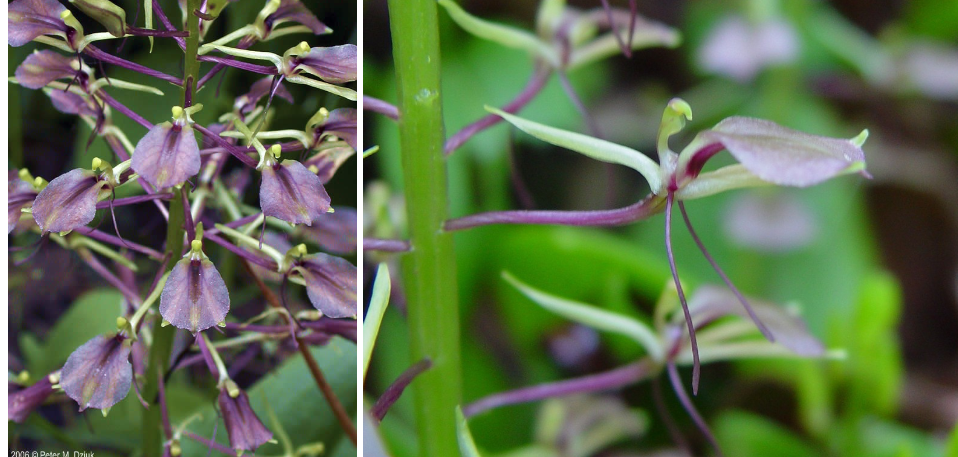
Monocots Orchidaceae Liparis liliifolia
Monocots Orchidaceae Liparis liliifolia
list 4
- “Large twayblade”
- Very broad glossy green leaves
- Flowers are broad and has a purple brown labellum
- Found in moist woodlands
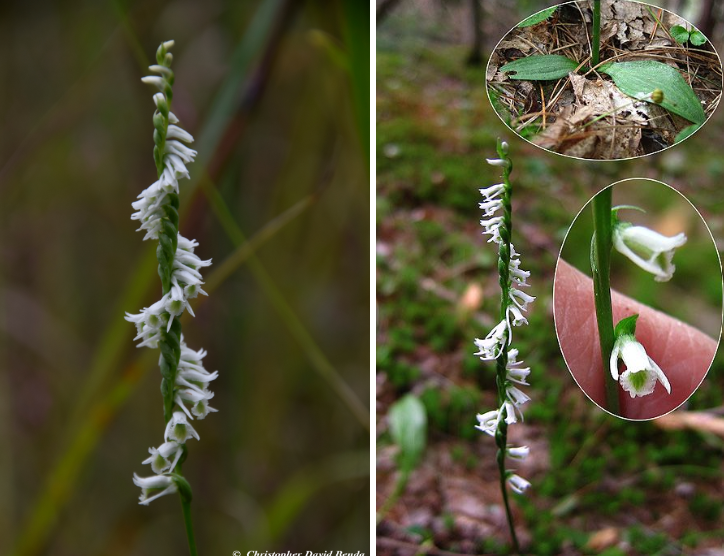
Monocots Orchidaceae Spiranthes lacera
Monocots Orchidaceae Spiranthes lacera
list 3
- “Slender ladies’ tresses” because it looks like braided hair
- Small tubular flowers that are arranged spirally around a central stalk
- Found in open woods (gaps in tree coverage with open grassy areas) and damp meadows
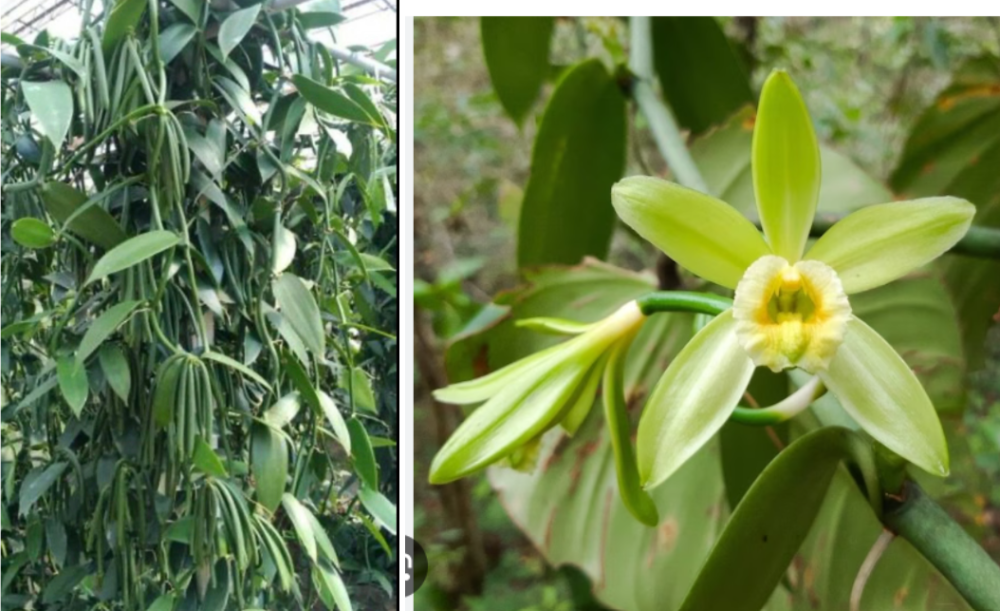
Monocots Orchidaceae Vanilla planifolia
Monocots Orchidaceae Vanilla planifolia
list 4
- An economically important genera
- Native to mexico. It was a pre columbian flavoring used by aztecs that cortez brought back in the 1520s
- The vanilla is extracted from the fruit which requires a specific bee
- These days madagascar is the vanilla producer of the world but because they do not have the specific bee to pollinate the plant the plants there must be hand pollinated which is very laborious making true vanilla very expensive
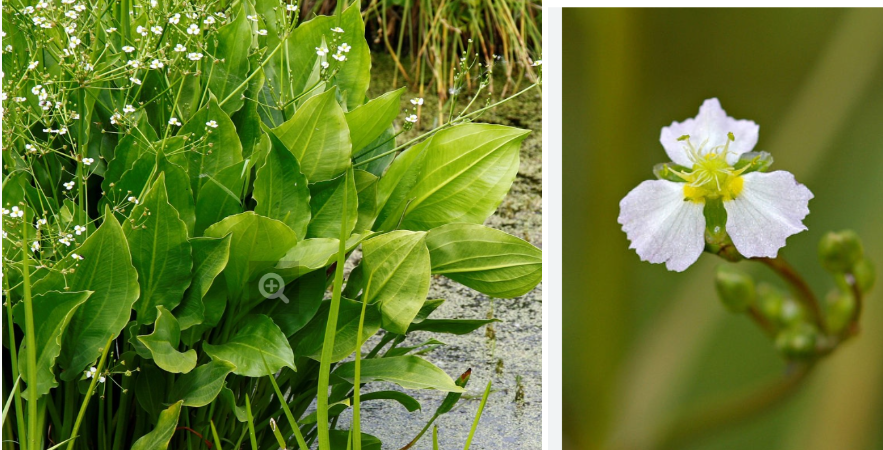
Monocots Alismataceae Alisma
Monocots Alismataceae Alisma
list 4
- Genera with 8 species
- Has inflorescence in pinnacles
- Often simple leaves
- Perfect flowers with 6 stamens
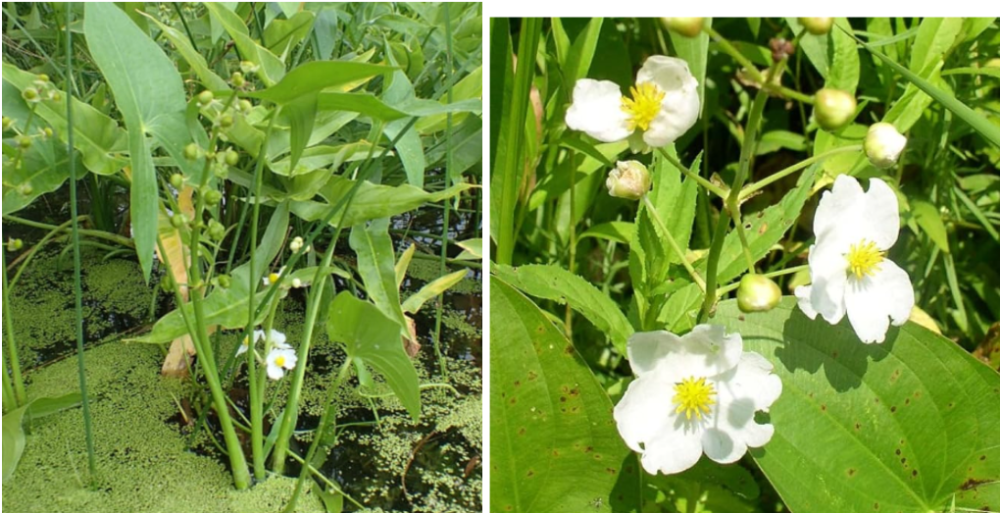
Monocots Alismataceae Sagittaria latifolia
Monocots Alismataceae Sagittaria latifolia
list 3
- “Duck potato”
- An economically important taxa
- Has a rhizome which was eaten by native americans
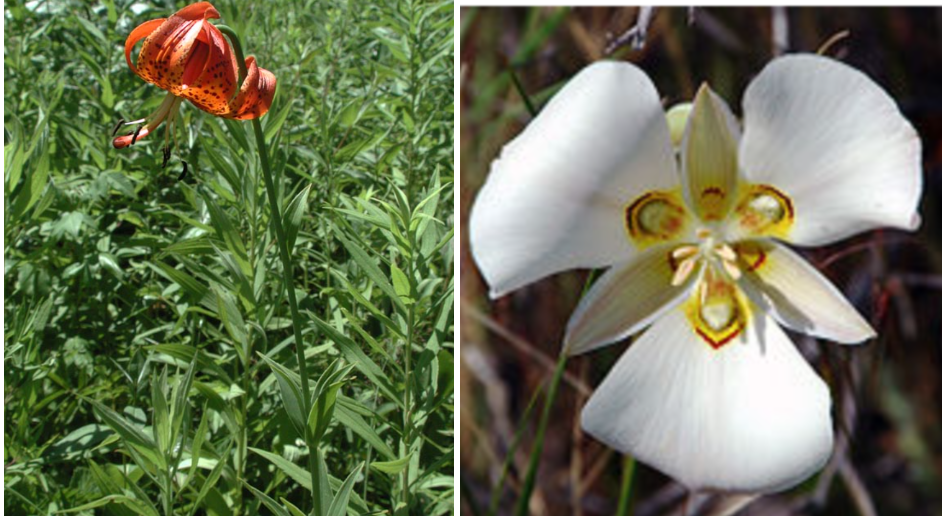
Monocots Liliaceae Lilium
Monocots Liliaceae Lilium
list 4
- Nearly all have bulbs
- Native to Europe, the Philippines, US, Canada, and Asia.
- The 3 in PA all have whorled leaves
- Used by native americans as food and medication. The bulbs were made into bread and also were used to treat spider bites and bruises
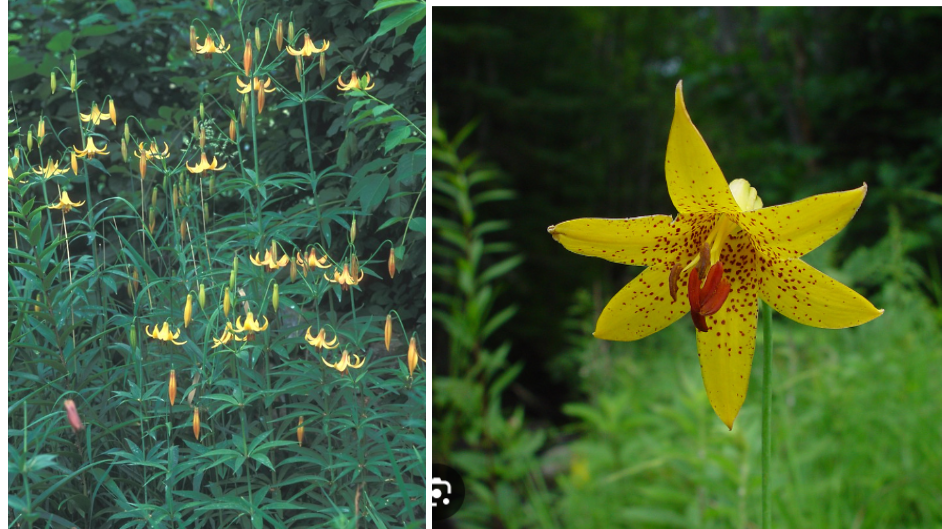
Monocots Liliaceae Lilium canadense
Monocots Liliaceae Lilium canadense
list 5
- “Canada lily”
- Nodding flowers
- Slightly reflexed petals
- Leaves roughened on margins and veins
- Yellow and orange varieties are different subspecies
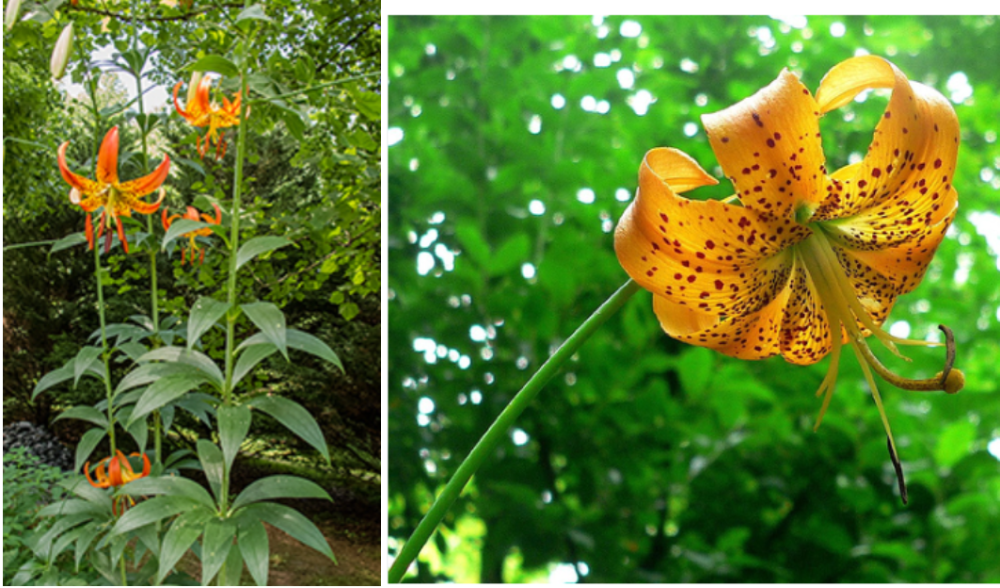
Monocots Liliaceae Lilium superbum
Monocots Liliaceae Lilium superbum
list 4
- “Turk’s cap lily”
- Nodding flowers
- Strongly reflexed petals
- The underside of the leaves are smooth
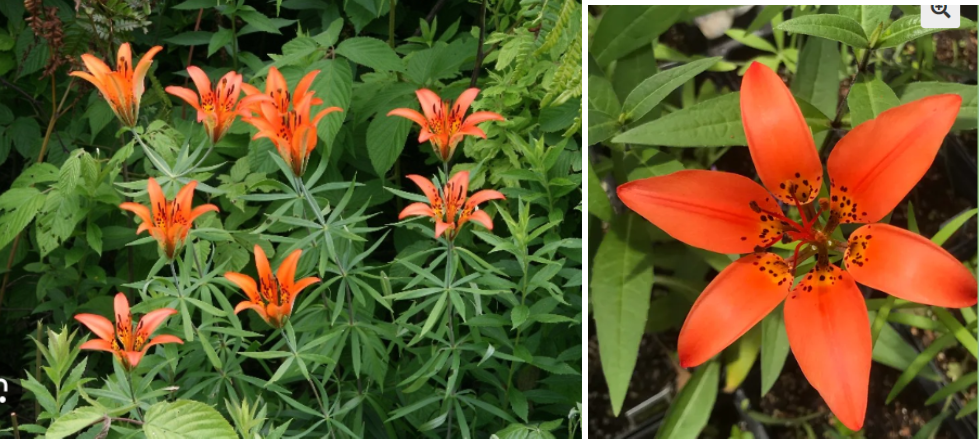
Monocots Liliaceae Lilium philadelphicum
Monocots Liliaceae Lilium philadelphicum
list 4
- “Wood lily”
- Has erect flowers
- Petals’ bases are narrowed sharply inwards (he called them something like chlored?)
- Gap in the base of the petals due to this
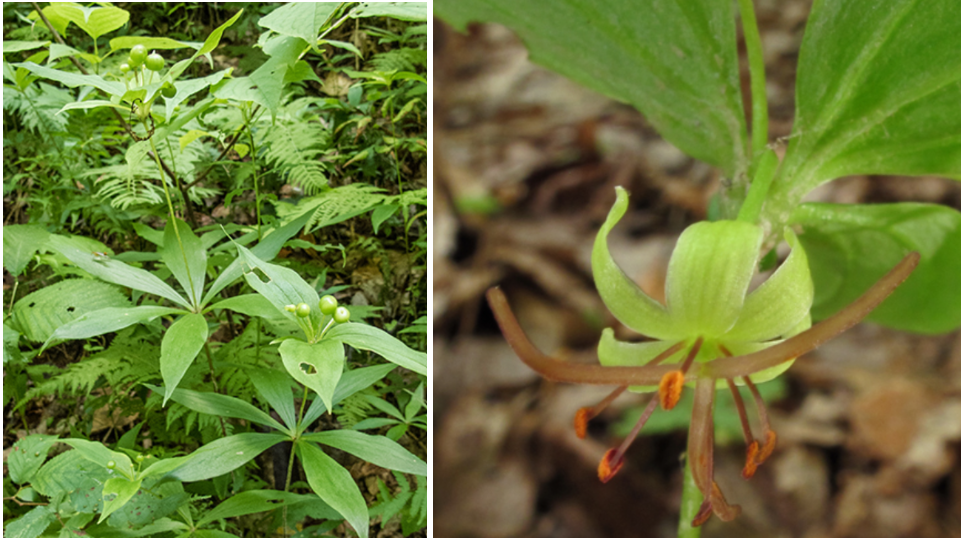
Monocots Liliaceae Medeola virginiana
Monocots Liliaceae Medeola virginiana
list 10
- “Indian cucumber”
- Found in light shade and moist acidic woodlands
- Young plants have a single whorl of leaves with no leaf stalks
- Mature plants have 2 whorls of leaves but the uppermost whorl of 3 is technically a bract
- Has a few flowered umble
- Flowers have 3 yellow strongly reflexed petals
- Stigmas are huge, red, and look like a mustache
- Flowers in may/june
- September it produces purple/blue berries
- Edible rhizomes which were eaten by natives which taste and smell like cucumber
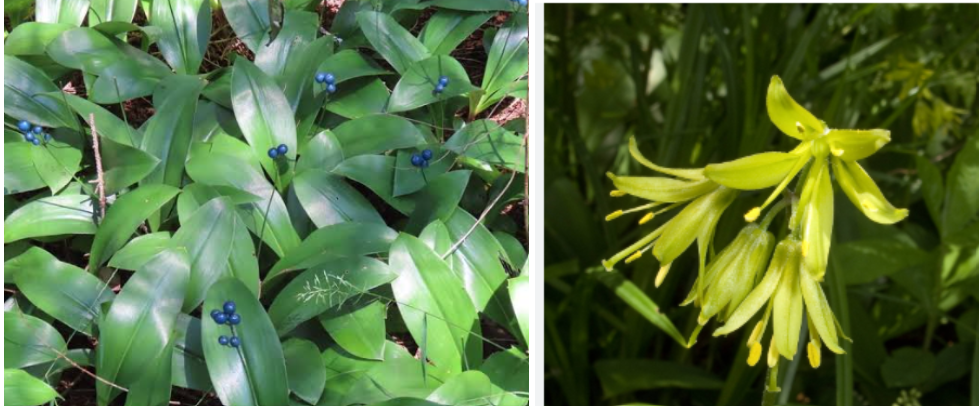
Monocots Liliaceae Clintonia borealis
Monocots Liliaceae Clintonia borealis
list 3
- blue -beard lily”
- Yellow flowers
- Blue berries
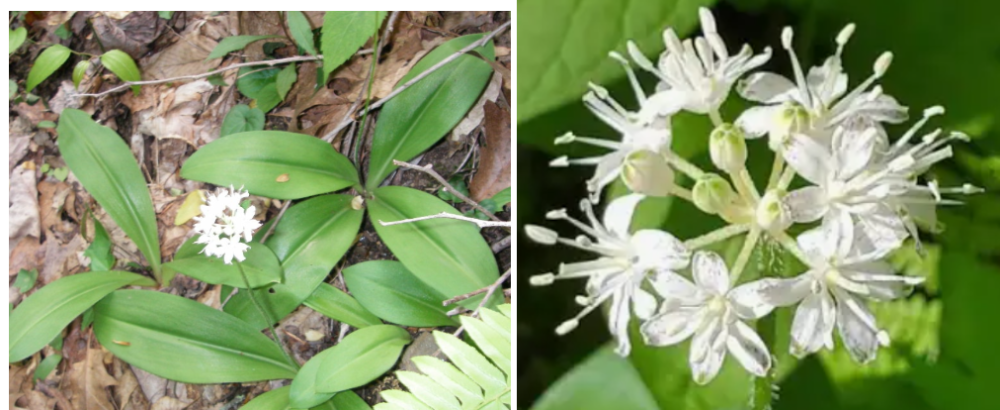
Monocots Liliaceae Clintonia umbellulata
Monocots Liliaceae Clintonia umbellulata
list 3
- “Speckled wood-lily”
- White flowers
- Black berries
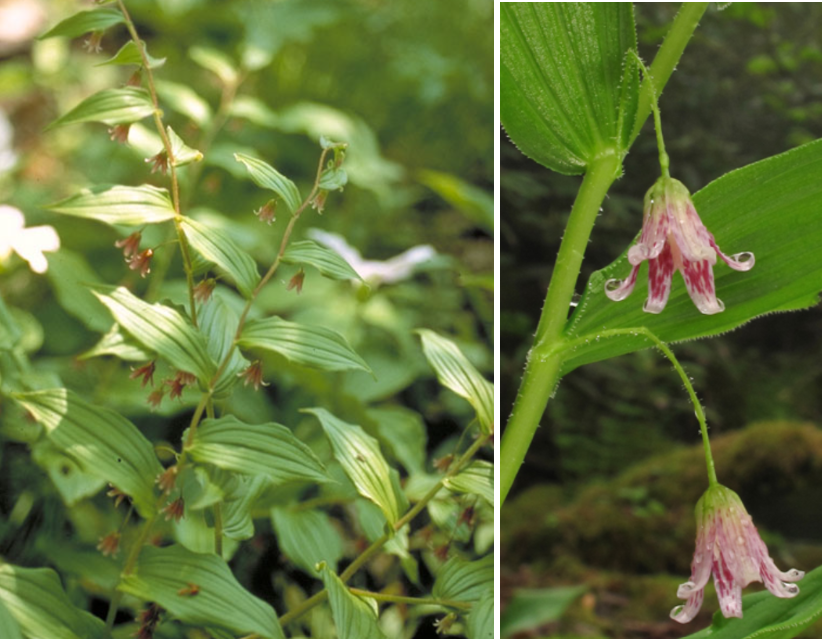
Monocots Liliaceae Streptopus lanceolatus
Monocots Liliaceae Streptopus lanceolatus
list 5
- “Rose mandarin”
- Has zigzagging stem
- Flowers nodding underneath leaves
- Very commonly have a twist in the pedicel
- Pink/white flowers that are slightly reflexed at the apex of the petals
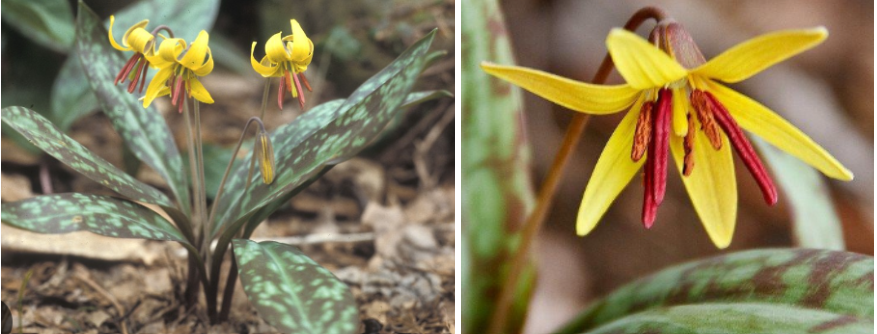
Monocots Liliaceae Erythronium americanum
Monocots Liliaceae Erythronium americanum
list 2
- “Yellow trout lily”
- Has yellow flowers
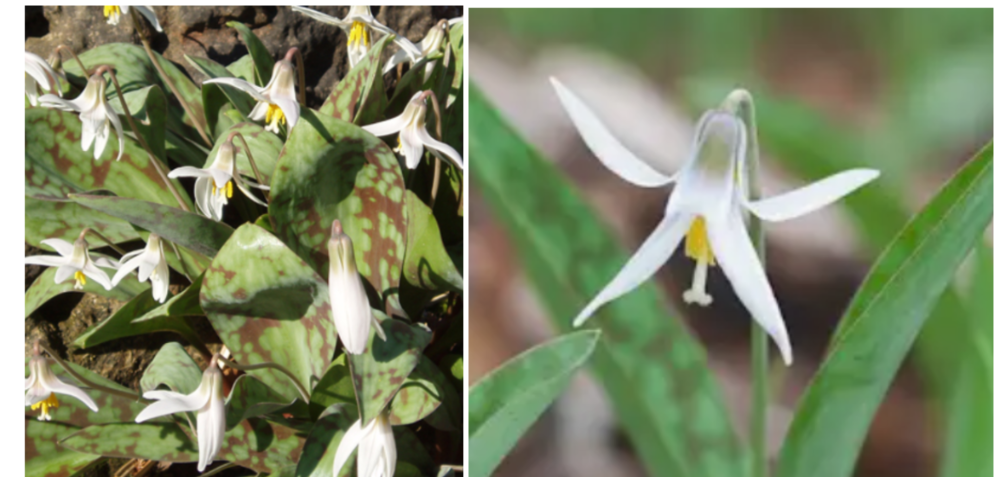
Monocots Liliaceae Erythronium albidum
Monocots Liliaceae Erythronium albidum
list 3
- “White trout lily”
- Has white flowers
- Not as common in our area, more common in the american midwest
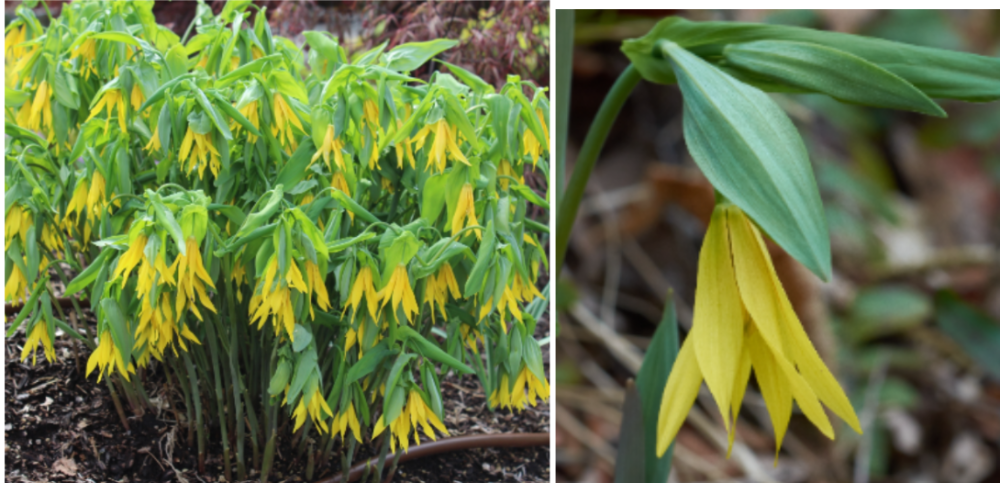
Monocots Colchicaceae Uvularia
Monocots Colchicaceae Uvularia
list 6
- “Bellworts”
- Flowers superficially look auxiliary but are terminal
- Flowers are yellow or ivory yellow
- Have a capsule/ dry fruit
- Bloom in spring and are found in woodlands
- 2 of the local species have perfoliate leaves and the other two have sessile (stalk-less/petiole-less) leaves
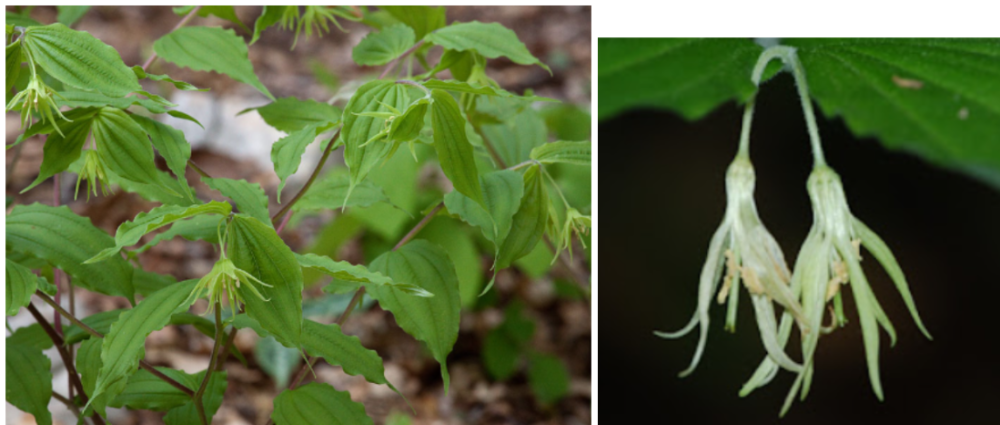
Monocots Colchicaceae Disporum lanuginosum
Monocots Colchicaceae Disporum lanuginosum
list 5
- “Yellow mandarin”
- Flowers are very obviously terminal
- Flowers are a greenish yellow
- Has a berry/fleshy fruit
- Bloom in spring and are found in woodlands
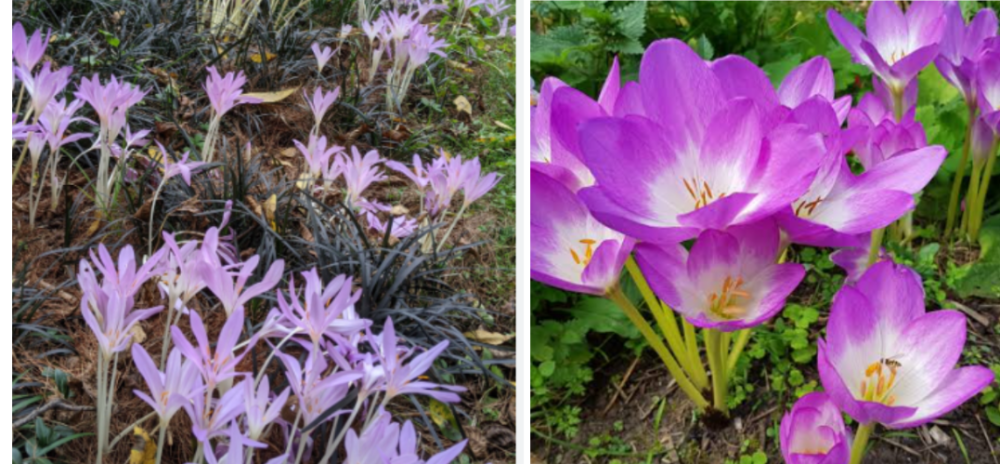
Monocots Colchicaceae Colchicum
Monocots Colchicaceae Colchicum
list 5
- Economically important as it makes colchicine
- Native to mediterranean europe and parts of asia
- Colchicine treats gout and is being studied as a cancer drug. Colchicine binds to tubulin and stops spindle fiber development within the cell to halt mitosis
- Very toxic to humans as it stops mitosis
- Colchicine is used agriculturally as it induces polyploidy in crops to give them superior features
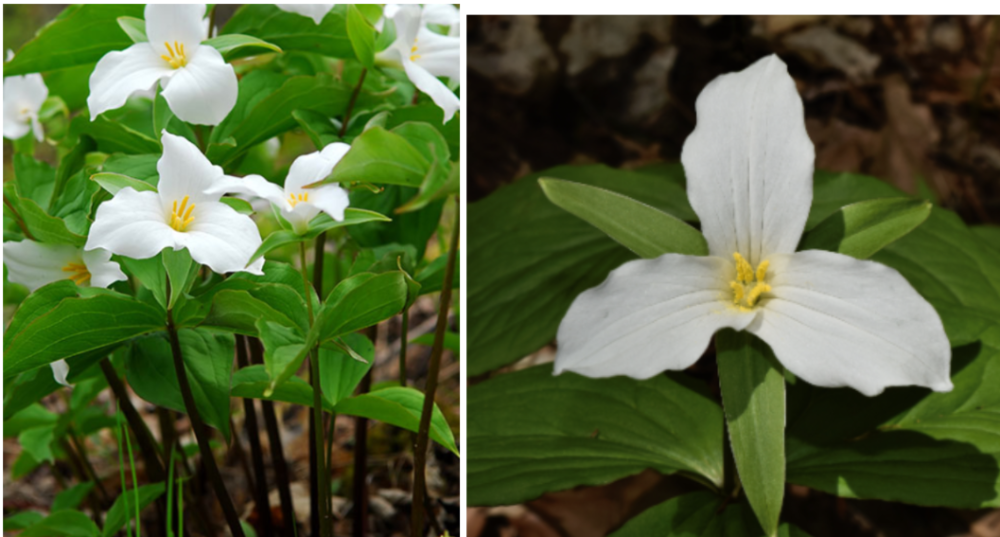
Monocots Melanthiaceae Trillium grandiflorum
Monocots Melanthiaceae Trillium grandiflorum
list 2
- Erect flowered trillium
- Has white flowers
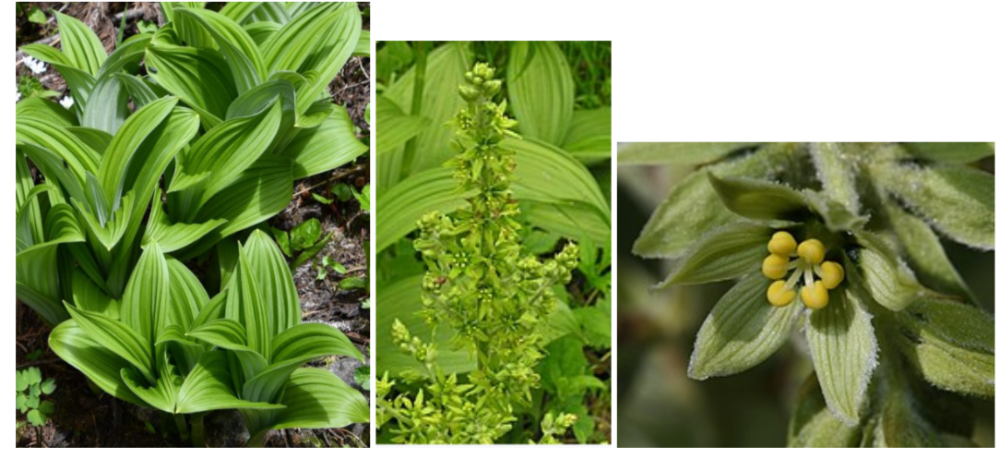
Monocots Melanthiaceae Veratrum viridae
Monocots Melanthiaceae Veratrum viridae
list 6
- “False hellebore”
- Found in wet woodlands along stream sides or seepage areas
- Has large pleated leaves with raised ribbing
- Flowers are on long stalks
- Insignificant green flowers
- Locally common
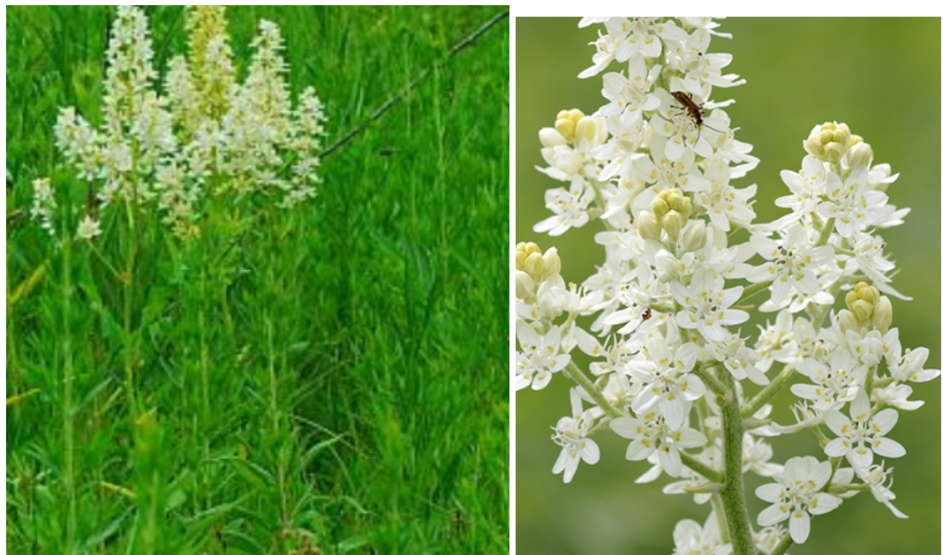
Monocots Melanthiaceae Melanthium virginicum
Monocots Melanthiaceae Melanthium virginicum
list 6
- In PA called Veratrum virginicum
- “bunchflower”
- Has more lax (loose) flowers. The inflorescence has gaps in between the flowers
- Glabrous (hairless) leaves
- Claw? Chlor? Petals have abrupt narrowing
- There are yellow glands on each side of the petal
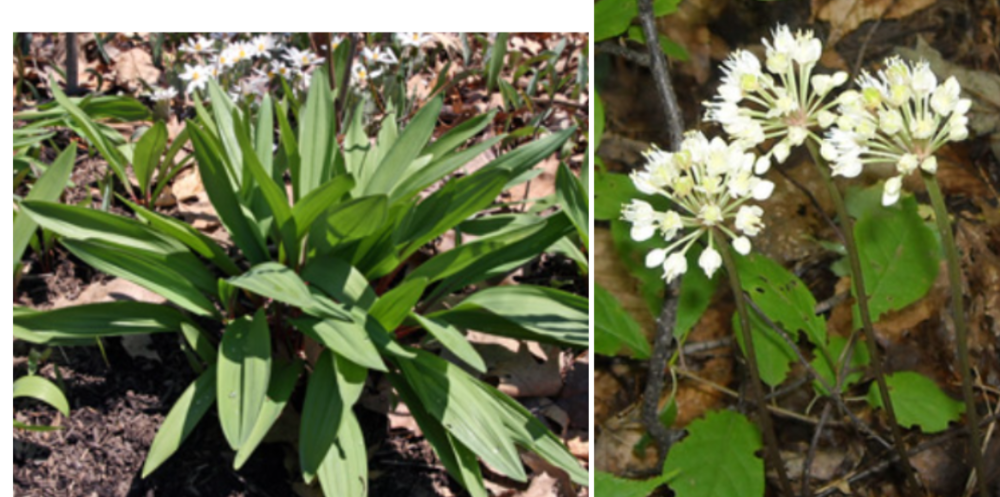
Monocots Alliaceae Allium tricoccum
Monocots Alliaceae Allium tricoccum
list 6
- “Ramps” “wild leek”
- The only member in the genus with lanceolate to elliptic leaves (all other onions have narrow linear leaves)
- Glossy green leaves
- Smells like onion when leaves are crushed
- Culturally important in appalachia to eat with scrambled eggs and potatoes
- Festivals in appalachia exist celebrating these ramps
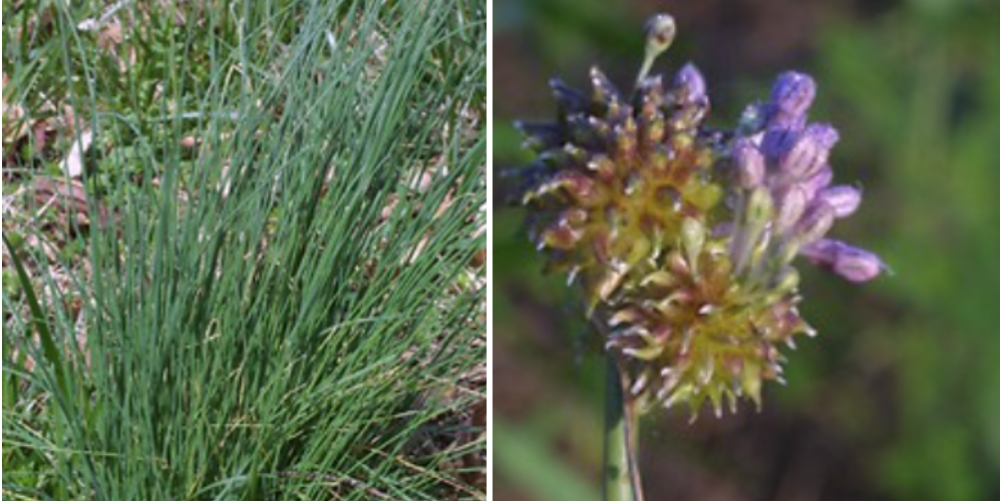
Monocots Alliaceae Allium vineale
Monocots Alliaceae Allium vineale
list 7
- “Field garlic”
- Non-native (exotic, originally found in europe)
- Common weed
- Evergreen leaves
- Leaves are hollow and terect (leaves are hollow and triangular in cross-section)
- Leaves produced basally from the bulb, leaves also are produced on the stem
- Super common in our area
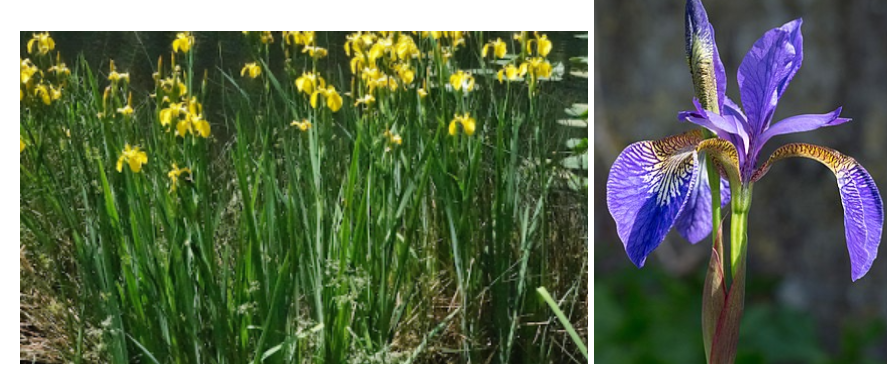
Monocots Iridaceae Iris
Monocots Iridaceae Iris
list 6
- Iris- greek for rainbow
- Distinct flowers where the petals and sepals are both petal-like. The sepals resemble petals but do not look like the petals of their own flower, so they are able to be identified easily)
- In irises specifically the petals are called standards and the sepals are called falls\
- Petals, sepals, stamen, and styles are all fused and form a long tube
- The styles are petalloid and are called style arms.
- The style arm arches over the stamen in a distinct way
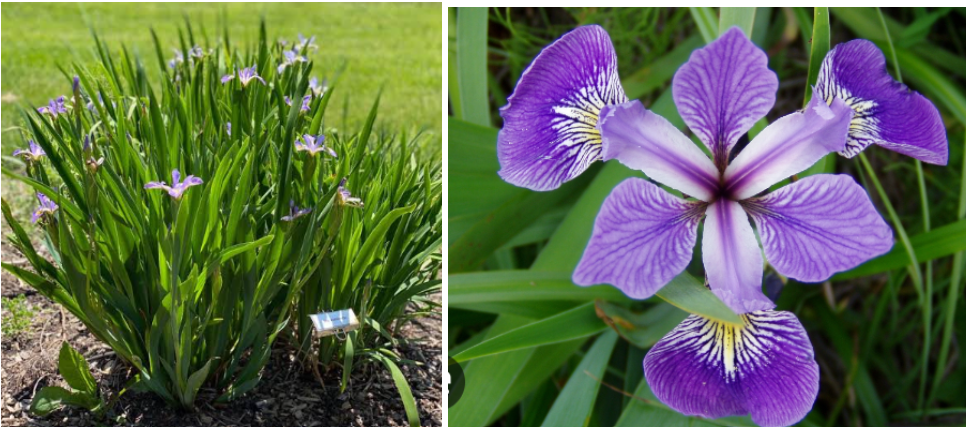
Monocots Iridaceae Iris versicolor
Monocots Iridaceae Iris versicolor
list 2
- “Northern flag-iris”
- Classic bumblebee pollination syndrome
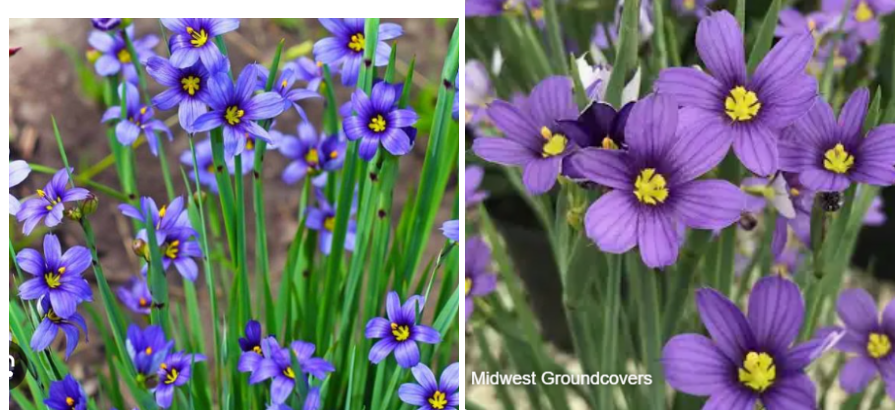
Monocots Iridaceae Sisyrinchium
Monocots Iridaceae Sisyrinchium
list 6
- “Blue eyed grass”
- Much smaller than irises, typically only a few inches in height
- Have more grassy leaves than irises
- Has 3 petals and 3 sepals which are difficult to tell apart ( obviously though the petals are the topmost level and the sepals are underneath them)
- A lot of species have blue flowers but some have white, yellow, or purple flowers
- 70-200 species in this genus alone, there is a great deal of taxonomic confusion between them aswell due to:

Monocots Iridaceae Crocus sativus
Monocots Iridaceae Crocus sativus
list 4
- “Saffron crocus”
- Native to western asia and mediterranean europe
- The world’s most valuable spice
- This is because it is extremely difficult to harvest as the spice is in the flimsy red styles
- The spice is used as flavoring, as well as saffron dye can be taken from the styles aswell